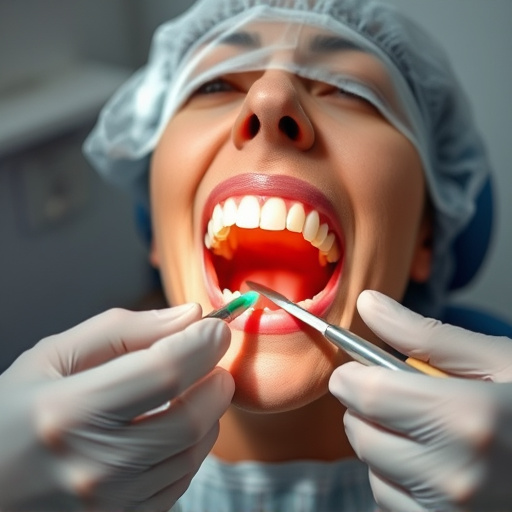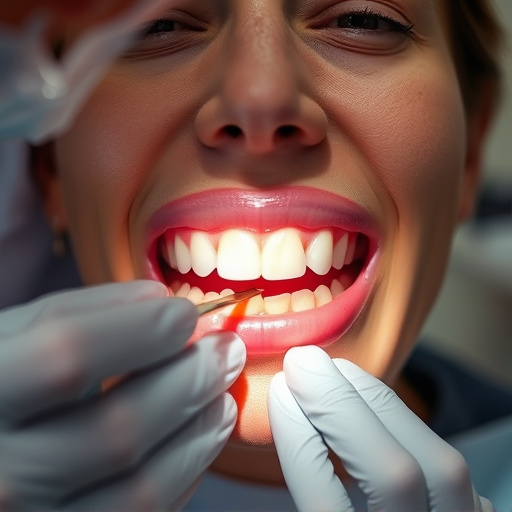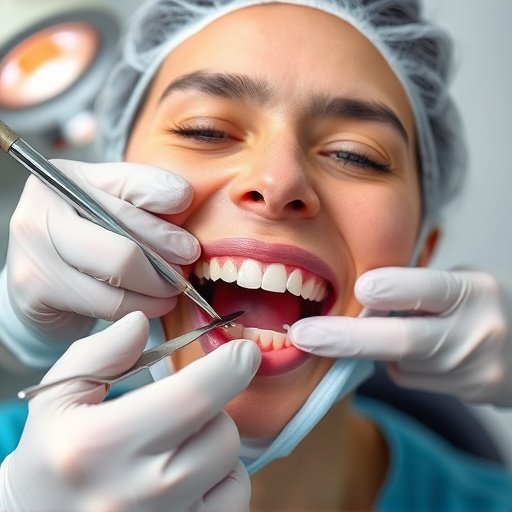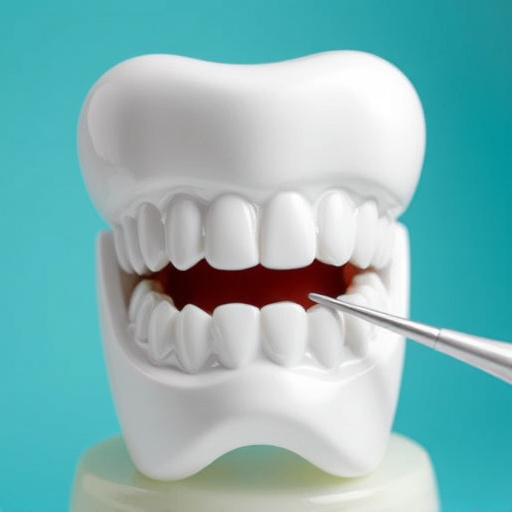Oral surgery procedures, ranging from wisdom teeth extraction to jaw realignment, are essential in family dentistry for enhancing smile aesthetics and mouth functionality. Modern advancements have made these complex techniques safer and less invasive, with quick patient recovery times. Each case requires a tailored approach, addressing issues like impacted teeth or bite misalignment. Tooth extractions, common oral surgery procedures, involve numbing the area, exposing the bone, loosening and removing the tooth, and cleaning the socket for healing. Proper post-operative care, including rest, a soft diet, and good oral hygiene, is crucial for optimal recovery. Preventive dentistry practices also contribute to long-term oral health.
“Discover the comprehensive guide to oral surgery procedures, specifically tailored to tooth extractions. This insightful article breaks down complex processes into understandable steps, offering a transparent look at what to expect during and after these common oral surgery procedures. From pre-operative assessments to post-extraction care, learn how skilled professionals navigate the delicate process of tooth removal, ensuring optimal patient comfort and recovery. Explore the key aspects of oral surgery procedures and take charge of your dental health.”
- Understanding Common Oral Surgery Procedures for Tooth Extractions
- The Step-by-Step Process of a Tooth Extraction
- Recovery and Aftercare Following Oral Surgery Procedures
Understanding Common Oral Surgery Procedures for Tooth Extractions

Oral surgery procedures for tooth extractions are a common practice in family dentistry, offering solutions for various dental issues. These surgeries go beyond simple tooth removal and involve complex techniques to ensure optimal oral health. From wisdom teeth extraction to correcting dental deformities, these procedures are designed to enhance smile aesthetics and overall mouth functionality.
Understanding the specific oral surgery procedure is crucial when considering tooth repair or addressing concerns in children’s dentistry. Modern advancements have made these operations safer and less invasive, allowing patients to recover quickly. Each case is unique, requiring tailored approaches, whether it’s managing impacted teeth, treating dental infections, or realigning jaws for improved bite alignment.
The Step-by-Step Process of a Tooth Extraction

Tooth extractions are common oral surgery procedures performed by experienced dentists and specialists to remove a tooth from its socket in the jawbone. The step-by-step process involves several careful stages to ensure a safe and comfortable experience for the patient. Initially, the dentist will administer local anesthesia to numb the area around the tooth to be extracted, minimizing discomfort during the procedure. They may also use sedation techniques for more complex cases or anxious patients.
Next, using specialized tools, the surgeon carefully opens the gum tissue surrounding the tooth, exposing the underlying bone. The tooth is then loosened by breaking the dental cemento that binds it to the socket with a process called ‘luxation’. Once the tooth is free, it’s gently removed from the jawbone, and the surgeon cleans the area to prevent infection. In some cases, especially for impacted wisdom teeth, additional steps like sectioning the tooth (cutting it into smaller pieces) or using osteotomes (specialized tools for bone manipulation) might be required. After extraction, the dentist may pack the socket with a sterilized material to promote healing and sometimes insert a suture to aid in the closure of the gum wound, providing comprehensive dental care and ensuring optimal post-operative recovery.
Recovery and Aftercare Following Oral Surgery Procedures

After an oral surgery procedure like a tooth extraction, proper recovery and aftercare are crucial for optimal healing. It’s essential to follow the surgeon’s recommendations, which typically include resting adequately, maintaining a soft diet, and avoiding strenuous activities for the first few days. Over-the-counter pain relievers can help manage any discomfort, but it’s vital to avoid aspirin or ibuprofen until you’ve been cleared by your dentist, as these can increase bleeding risk.
Proper hygiene practices remain essential during recovery. Patients should continue with routine oral exams and maintain good oral hygiene through brushing and flossing gently but thoroughly. Additionally, keeping the extraction site clean can help prevent infection. While healing, it’s advisable to avoid smoking and excessive alcohol consumption, as these habits can impair healing and increase complications. Remember that preventive dentistry practices, such as regular check-ups and cosmetic fillings, can also play a role in ensuring smooth recovery and maintaining oral health long-term.
Oral surgery procedures for tooth extractions are common and effective solutions for maintaining optimal oral health. By understanding the step-by-step process, from initial assessment to recovery, patients can make informed decisions about their dental care. These procedures not only alleviate pain and improve overall well-being but also contribute to a vibrant, healthy smile long-term. Incorporating proper aftercare into your routine is key to a successful recovery, ensuring you can enjoy the benefits of improved oral health without complication.














